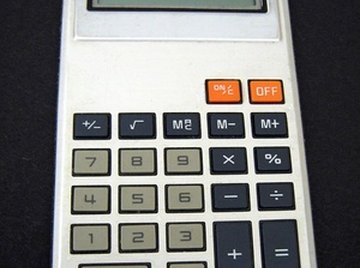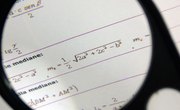
Calculating probability requires finding the different number of outcomes for an event---if you flip a coin 100 times, you have a 50 percent probability of flipping tails. Normal distribution is the probability of distribution among different variables and is often referred to as Gaussian distribution. Normal distribution is represented by a bell-shaped curve, where the peak of the curve is symmetrical around the mean of the equation. Calculating probability and normal distribution requires knowing a few specific equations.
Probability
Write down the equation for probability: p = n / N. The "n" stands for favorable elements, and the "N" stands for set elements. For this example, let's say that you have 20 apples in a bag. Out of the 20 apples, five of are green apples and the remaining 15 are red apples. If you reach into the bag, what's the probability that you will pick up a green one?
Set up your equation:
p = 5 / 20
Divide 5 into 20:
5 / 20 = 0.25
Keep in mind that the outcome can never be equal to or greater than 1.
Multiply 0.25 by 100 to get your percentage:
p = 25 percent
The odds of you grabbing a green apple out of a bag of 15 red apples are 25 percent.
Normal Distribution
Write down the equation for normal distribution: Z = (X - m) / Standard Deviation.
Z = Z table (see Resources) X = Normal Random Variable m = Mean, or average
Let's say you want to find the normal distribution of the equation when X is 111, the mean is 105 and the standard deviation is 6.
Set up your equation:
Z = (111 - 105) / 6
Subtract 111 from 105:
Z = 6 / 6
Divide 6 into 6:
Z = 1
Look up the value of 1 from the Z table (see Resources):
Z = 1 = 0.3413 Because the value of X (111) is larger than the mean (105) in the beginning of the equation, you're going to add 0.5 to Z (0.3413). If the value of X was less than the mean, you'd subtract 0.5 from Z.
0.5 + 0.3413 = 0.8413
Therefore, 0.8413 is your answer.
References
About the Author
Andrea Griffith has been writing professionally since 2005. Her work has been published by the "Western Herald," Detroit WDIV, USAToday and other print, broadcast and online publications. Although she writes about a wide range of topics, her areas of expertise include fashion, beauty, technology and education. She holds a Bachelor of Arts in journalism and English from Western Michigan University.
Photo Credits
calculator image by L. Shat from Fotolia.com
